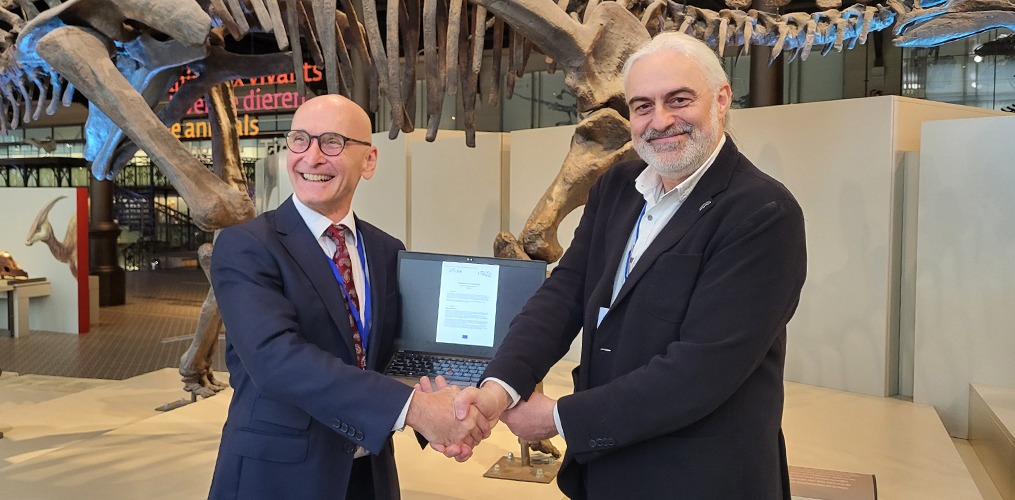
During the final stakeholder meeting of the Europa Biodiversity Observation Network on 27-28 May, LifeWatch ERIC CEO Christos Arvanitidis and the Chair of LTER-Europe and Coordinator of eLTER ESFRI process, Michael Mirtl, signed a Memorandum of Cooperation between LifeWatch ERIC and eLTER RI. This Memorandum aims to take the collaboration between the two organisations to the next level by combining the resources and expertise to advance ecosystem research and biodiversity conservation across Europe. LifeWatch ERIC and eLTER RI have collaborated on several flagship projects, such as ALTER-Net, ENVRI, ENVRIplus, and ENVRI FAIR.
A common mission
LifeWatch ERIC and eLTER RI are committed to addressing environmental challenges by conducting long-term, multidisciplinary research to understand and mitigate the impacts of climate change, pollution and biodiversity loss on ecosystems. The common mission is to enable a better future through integrated research efforts and shared data resources, leading to a deeper understanding of our planet’s ecosystems and contributing to the conservation and sustainability of life on Earth.
Memorandum of Cooperation’s goals
The collaboration will combine the potential of both Research Infrastructures, drawing on their respective areas of expertise. While LifeWatch ERIC aims to use advanced digital technologies to support biodiversity and ecosystems by facilitating data creation, access, quality control, management and dissemination, eLTER’s support of extensive documentation and integrated access to multidisciplinary data will provide access to a seamless and robust data services ecosystem.
The collaboration will also focus on aligning catalogues of resources, standardising data infrastructure and ensuring interoperable data and metadata standards to create a unified ‘data lake’ for researchers to access. In addition, creating virtual laboratories will facilitate the analysis of biodiversity data using LifeWatch ERIC’s advanced ICT technology and eLTER’s in-situ environmental data.
To achieve these goals, the Memorandum of Cooperation outlines several joint activities, spanning from the development and implementation of common tools and service-oriented architectures to enhance data interoperability, such as the Tesseract and NaaVRE technical composability layer and LifeBlock blockchain technology, to the organisation of joint dissemination, engagement and training activities addressed to their stakeholders, including EU and national decision-makers, funders, and the broader scientific community.